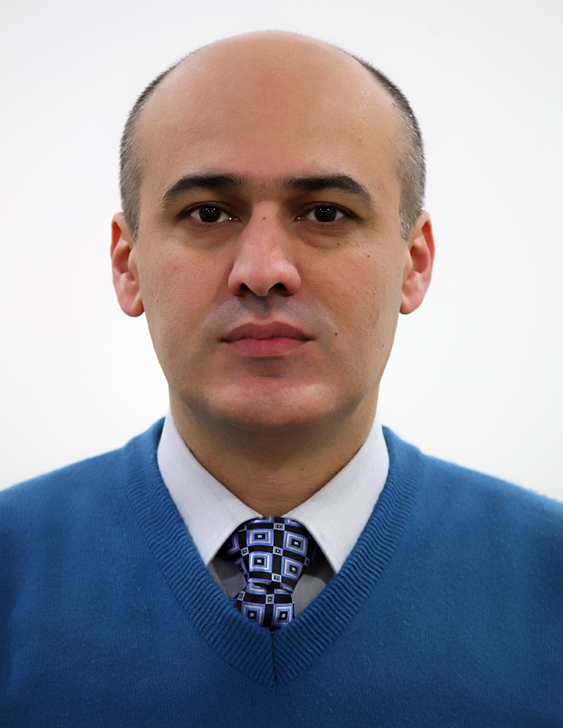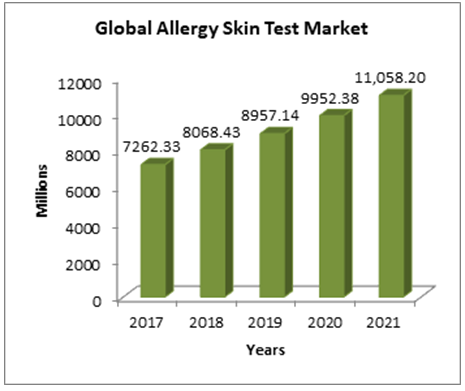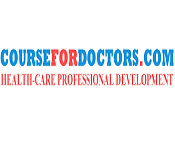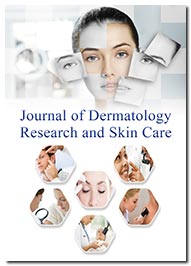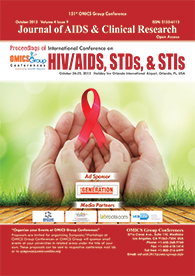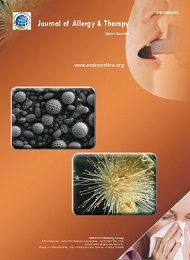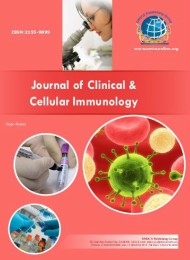Theme: Emerging Therapeutics in Integrated Allergic & Skin Care
Allergic Diseases 2019
Allergic Diseases 2019 takes privilege in welcoming all the participants from all over the world to attend “2nd International Conference on Dermatology and Allergic Diseases” scheduled to take place on June 13-14, 2019 in Helsinki, Finland. ICSVAD 2019 includes Keynote presentations, special sessions, oral talks Workshops, Symposiums, Poster Presentations, and Exhibitions. With its two days of agenda Allergic Diseases 2019 will focus on the theme “Emerging therapeutics in integrated Allergic and Skincare”. This conference provides an excellent platform and opportunity to discuss the about the leading researches, developments, and challenges within the field of Dermatology and Allergic Diseases and spread the most recent progressions in Allergy restoration and prevention.
Allergic Diseases 2019 is exclusively designed for Allergists, Immunologists, Bacteriologists, Virologists, Physicians, Health Care Researchers, Dermatologists, Microbiologists, Pulmonologists, Biochemists, Biotechnologists, Cellular biologists, Paediatricians, Molecular biologists, Pathologists, Epidemiologists, Internists, Urologists, Venereologists, Infectionist, Gynaecologists, Pharmacists, Nurse/nurse-practitioners, Students, Researchers, Professors, Academicians, students along with industries and others engaged in endeavours related to STD/AIDS research and Business Entrepreneurs. This conference also provides the time to collaborate with industry peers and discover knowledge and resources that can be used to achieve personal and organizational goals.
Allergy is a hypersensitive state of the immune system acquired through exposure to a particular allergen or typically harmless substances in the environment. The aim of Allergic Diseases 2019 is to diagnose and prevent dermatology and allergic diseases, control the spreading of infectious diseases, promote active lifestyles for long disease-free life and help simplify the problems of adolescents and children. We are greatly honored to cordially welcome you to Helsinki, the capital and beautiful of Finland, and we are sure you will have a memorable experience in conference and in sight-seeing.
Track 1: Allergy and Autoimmune Disorders
An allergic reaction is the response of our hypersensitive immune system against allergens, which are typical foreign harmless substances. Allergens can enter our body through inhalation, food, water, drinks, and sometimes, even on touching them. Our immune system protects our body from invading organisms that can cause infections. However, early exposure to allergens is protective in nature, while late exposure can sometimes cause distress and can result in allergy. Treatment for allergic reactions includes mostly evading allergens and use of antihistamines and steroids. However, in severe allergies, adrenaline/ epinephrine are to be injected. In cases of an acute hypersensitive immune system, Allergen immunotherapy is recommended which exposes the immune system to large quantities of potential allergens gradually; however, this therapy is not used to treat food allergies. The immune system reacts to the allergen by producing Immunoglobulin E (IgE) antibodies and attach to mast cells which release histamine and other chemicals thereby causing an allergic reaction..
Track 2: Drug and Vaccines Allergy
A drug allergy is an adverse reaction to sensitivity towards drugs and medications and it doesn’t include the immune system most of the times. Medications and therapies like Antibiotics, Aspirin, non-steroidal anti-inflammatory medications, Anticonvulsants, Monoclonal antibodies, Chemotherapy are more likely to produce allergic reactions. One of the most severe allergic reactions is Anaphylaxis that involves hives, lowered blood pressure, swelling, and in more severe cases, causes anaphylactic shock, which if not treated immediately can be lethal since it involves more than one body metabolic functions. However, an allergic reaction doesn’t occur on the first exposure with the allergen, since the body has to first create memory then the lymphocyte cells make antibodies against the antigen. However, since the drugs consist of numerous different substances, any of those substances can cause an allergic reaction, including dyes. Symptoms include rashes, trouble breathing, fever, itching, and swelling or redness.
The vaccine allergy is one of the most extremely rare types of allergy, with only one to two serious allergic reactions per million vaccinations given. But when a person affected by vaccine allergy, it can be very serious, even life-threatening. The allergic reactions start within minutes, after the vaccination and the symptoms include indications on the skin like itching, urticaria, and swelling, followed by respiratory indices like a cough, wheezing, difficulty breathing, swollen glands, and reduced blood pressure. If the reaction is stronger, then it should be treated immediately with epinephrine.
Track 3: Respiratory Allergy, COPD and Asthma
Respiratory allergies occur when the immune system has a negative reaction with some airborne substance such as dust or we can call the respiratory allergies are airborne. Although these substances are not really a danger to the body, the antibodies from the immune system identify the allergen as a threat. This cause certain cells to release a chemical substance called histamine, which causes an allergic reaction; while the symptoms of allergy are different from person to person, symptoms can affect the skin, eyes, or airways.
Respiratory allergies are mainly rhinitis and asthma. Rhinitis causes irritations of the sensory nerves, which affects the nasal passages. Asthma is caused by the inflammation of the bronchi, which affects the airways within the lungs. But in few cases of asthma, the bronchial walls got swollen thus cause the inflammation of bronchi and thus leads to breathless.
Track 4: Pediatric and Neonatal Allergy
Allergic diseases in children have increased significantly in recent years and now affect up to 30% to 35% of children; which are the major cause of morbidity in children. Allergy tends to be more common in children as compared to the adults, with allergic rhinitis, asthma, eczema, and food allergy. As the child matures the distribution and the pattern of diseases start changing. Infants are more likely to present with food allergy, gastrointestinal symptoms and wheezing atopic eczema, whilst the older children typically present with allergic rhinoconjunctivitis and allergic asthma.
Atopic children have a genetic predisposition, which is the exposure to the environmental allergens, infection, and irritants that will determine the sensitization to different dietary and inhalant allergens. As the genetic and environmental factors which act on an immature cellular immune system are better elucidated and their roles established, the implementation of more abiding preventive efforts will be developed.
Track 5: Food Allergy and Gastrointestinal Infections
Food allergy is an immune system reaction that occurs due to certain proteins found in food. Even a tiny amount of allergy-causing food can trigger signs and symptoms such as hives or swollen airways, digestive problem. In a few people, a food allergy can cause severe symptoms or even can be frightening such as anaphylaxis which is a life-threatening reaction. Food allergy affects an estimated 5 to 7 percent of children under age 3 and up to 3 percent of adults. While there’s no cure, few children grow with their food allergy as they get older. Food allergy includes itchiness, vomiting, diarrhea, hives, trouble breathing, swelling of the tongue, or low blood pressure. Food allergies are more common in male children than females and appear to be increasing in frequency. Some allergies are commonly developed in early life, while others typically develop later in life.
Track 6: Allergy and Cardiovascular Diseases
Allergic diseases and cardiovascular diseases are commonly found in developed countries. They lead to serious health difficulties and undoubtedly impair the quality of life. Both the types of diseases are identifying by excessive inflammatory processes. The most life-threatening and deadly demonstration of allergic diseases in anaphylaxis is a condition in which the cardiovascular system is responsible for the majority of clinical symptoms and for the potentially fatal outcome. Recent Studies suggest a link between allergy and cardiovascular disease, resulting from the overactivity of the immune system in allergic diseases and increased synthesis of proinflammatory mediators.
The heart is both a source and a target of chemical mediators released during the allergic reaction. Mast cells are abundant in human heart, where they are located generally around the outermost covering tissue called adventitia of large coronary arteries and in close contact with the small intramural vessels. Cardiac mast cells can be activated by a number of stimuli including complement factors, general anesthetics, muscle relaxants, and allergens. The mediators which are released from immunologically activated human heart mast cells strongly influence ventricular function, cardiac rhythm and coronary artery tone.
Track 7: Seasonal Allergy and Immune Responses
Seasonal allergies, that occurs in a particular season is more commonly known as “hay fever” or seasonal allergic rhinitis, are allergy symptoms that happen during certain times of the year, generally when the outdoor molds release their spores, and grasses, weeds, and trees release tiny pollen particles into the air to fertilize other plants. The pollen released from the insect-pollinated plants is too heavy to remain airborne for a long period of time, and they’re less likely to trigger an allergic reaction.
Hay fever occurs by its name from the hay-cutting season. Generally, this activity occurred in the summer months, during the same time many people experienced symptoms. Seasonal allergies are less common during the winter, but few people experienced allergic rhinitis year-round. In the whole year seasonally plants release their characteristics pollens. Depending on the environment the allergy triggers and people may experience hay fever in more than one season. The immune system may also react to an indoor allergen such as pet dander or mold.
Track 8: Microbial Allergy
Microbial allergy: A misguided reaction to foreign substances by the immune system, the body system of defense against foreign invaders, particularly pathogenic microorganisms, bacteria, fungi, protozoa, worms, virus and even infectious proteins called prions. The allergies can cause bacterial infections including sinusitis whereas many sinusitis infections are viral and resolve on their own; which cannot be treated with the antibiotics. However, the bacterial sinus infections may require antibiotics to get better. The symptoms of sinusitis can include nasal drainage or congestion, lessened ability to smell, facial pressure, fever, fatigue disorders, cough, and ear pressure. People with these symptoms may have a bacterial infection. Many antibiotics are highly effective against bacterial sinusitis, wiping out the infection.
Track 9: ENT & Ocular Allergy
Allergies primarily affect the middle ear which has a drainage tube or pressure release valve called the eustachian (you-STAY-shun) tube. If this tube is blocked with mucus or its opening is blocked by the swelling caused by allergy, then pressure and fluid can build up in the middle ear. This gives us the sensation of being down a well, having the need to “pop” our ears frequently, and can result in the diminished hearing. Allergies are well a recognized cause for recurrent otitis media or OM, also called as Middle ear infections.
Nasal allergies can cause itching, nasal rubbing, sneezing, nasal congestion, and nasal drainage. Generally, allergies are not the primary cause of these symptoms in children under four years old. However, in allergic children, these symptoms are caused by exposure to allergens such as pollens, mold, dust, and dander. Allergies may lead to the formation of too much mucus which can make the running nose or drip down the back of the throat, which cause “post-nasal drip”, which can lead to sore throats, cough and a husky voice.
Ocular allergy is also known as eye allergy such as allergic conjunctivitis which is an inflammatory reaction of the eye caused by particles or allergens in the environment. It is very usual and occurs in all age groups of people. Inflammation can be asymptomatic or cause dramatic symptoms, and in severe cases, can cause severe loss of vision.
Track 10: Insect Venom Allergy
Stings from the insects such as hornets, wasps, honeybee, yellow jackets, and fire ants are known to cause the allergic reactions to the venom injected into the skin. However, most of the people are not allergic to the insect venom, but sometimes the pain from the sting may cause them to mistake a normal reaction for an allergic one. The harshness of an insect sting reaction differs from person to person based on the types of insect toxins. A normal reaction will result in swelling, pain, and redness confined to the sting site. But a large-scale reaction will result in swelling that extends beyond the sting site which can persist for two to three days, corticosteroids and antihistamines are sometimes prescribed to lessen the discomfort. During the summer and spring months, people with allergy are not the only ones wary of wasps, bees, other insects. These belong to the Hymenoptera order of insects, and their stings cause itching and painful swelling in non-allergic individuals.
Track 11: Zoonotic Diseases and Veterinary Allergy
Zoonotic Diseases or animal allergy is an allergic reaction to proteins found in pet’s dander, saliva, urine and animal’s skin flakes. The symptoms of the pet allergy include hay fever, sniffling, sneezing, itchiness, runny nose, and watery eyes and a runny nose. Few people may experience symptoms of asthma such as wheezing, and difficulty in breathing. Commonly, pet allergy is triggered by exposure to the dead flakes of skin a pet sheds. The animals with pet hair or fur can collect pollen, mold, spores and other outdoor allergens, which can be a source of pet allergy, but pet allergies are most commonly associated with cats and dogs. People having a pet allergy, the better strategy is to avoid the exposure to the animals as much as possible. Medication and other treatments may be needed to relieve the symptoms and manage asthma.
Track 12: Pathophysiology of Allergy
Pathophysiology or physiopathology of allergic diseases is a convergence of pathology with physiology; which can assist in the treatment, management, and therefore in the prevention of allergy. Allergic diseases may develop in any organ or system which is caused by the etiological factors includes infectious agents and foreign proteins of the factors operating in the casual pathogenesis of infectious diseases. The most important one is an exaggerated formation of antibodies, which appears to be uncontrolled and occurring irrespective of the demands of the organism. The crucial morphological features in allergic inflammation are rather assorted, their diagnostic value differing in a wide range but being never absolute. The immunoperoxidase and immunofluorescent methods and electron microscopy are important diagnostic tools which have been generally acknowledged that many drugs operate as antigens. This may cause the death of the respective patient, but the allergic manifestations may subside after withdrawal of such drugs.
Track 13: Venereal Diseases
Venereal diseases: A diseases that are transmitted by sexual contact, which is caused by microorganisms that survive on the skin or mucus membranes or that are transmitted by vaginal secretions, semen or blood during intercourse. More than 30 different parasites, viruses, and bacteria can be transmitted through sexual contact. The genital areas provide a warm and moist environment that is especially conducive to the proliferation of bacteria, yeasts, and viruses, so a great many diseases can be transmitted this way, including chlamydia, AIDS, genital warts, syphilis, gonorrhea, yeast infections, and some hepatitis.
Venereal diseases are also known as a morbus venereus or sexually transmitted diseases (STD) which doesn’t mean sex is the only way STDs are transmitted; it also depends upon the type of STD, infections may also be transmitted through sharing needles, donor tissue, blood, breastfeeding or childbirth. Sexually transmitted infections (STI) can be transmitted to an infant before or during the childbirth which may result in poor outcomes for the baby and few STI may cause problems with the ability to get pregnant.
Track 14: Skin Infections and Allergy
The skin is the largest organ of the body which plays an important role to protect your body from infection. Sometimes the skin itself becomes infected which is caused by a wide variety of bacteria, virus, fungus, germs, and symptoms can vary from mild to serious. Mild skin infections may be treatable with over-the-counter medications and home remedies; whereas other infections may need medical attention. Bacterial skin infection starts with small and red bumps that slowly increase in size. Few bacterial infections are mild and easily treated with tropical antibiotics, but other infections need an oral antibiotic. Fungal infections of the skin are very common and include athlete’s foot, ringworm, jock itch, and yeast infections. Virus-related cutaneous conditions are caused by two main groups of viruses- RNA and DNA types-both of which are obligatory intracellular parasites.
Track 15: Dermatitis and Psoriasis
Dermatitis is a general term that describes an inflammation of the skin, which is distinguished from a Skin infection, which can result in the skin inflammation. Skin inflammation caused by skin infection is called infective dermatitis. Dermatitis can have many causes and begins in many different forms. It usually involves an itchy rash on the reddened and swollen skin. Dermatitis is a common condition which is not contagious, but it can make people feel uncomfortable and self-conscious.
Skin infection by dermatitis may ooze, blister, develop a crust or flake off. Examples of dermatitis include atopic dermatitis, dandruff, and rashes caused by contact with any of a number of substances, such as soaps, ivy, and jewelry with nickel in it. The combination of medications and self-care steps can help to treat dermatitis.
Psoriasis is generally thought to be a genetic disease that is triggered by environmental factors which are also called a long-lasting autoimmune disease characterized by patches of abnormal skin. These skin patches are typically dry, red, itchy and scaly. The patches may be purple in the people with darker skin. It can vary in severity from small, localized patches to complete body coverage.
Track 16: Skin Disorders and Pigmentations
Skin disorders vary greatly in symptoms and severity which can be temporary or permanent and may be painful or painless. Some have genetically, while others may have situational causes. Few skin conditions are mild, and others can indicate a more serious issue as life-threatening.
Skin pigmentation is commonly known as skin discoloration often results of sun exposure (UV rays), genetics, hormonal changes, pregnancy, and medications such as birth control pills, aging skin or the wrong use of skin care products. Skin gets its color from a pigment called melanin, which is made up of special cells in the skin called melanocytes. When these cells get damaged or become unhealthy, it affects the production of melanin, which causes skin pigmentation. Excess production of melanin leads to hyperpigmentation. Hyperpigmentation causes the skin to darken; it can occur in small patches, cover large areas and affect the whole body.
Track 17: Clinical Immunology & Immunotherapies
Clinical immunology is the study of different diseases caused by the immune system and immunodeficiency disorders such as failure aberrant action, and malignant growth of the cellular elements of the system. It also involves the diseases of other systems, where immune reactions play a role in the pathology and clinical features. Clinical immunology is also helped to prevent the immune system’s attempts to destroy allografts.
Immunotherapy also called biologic therapy, which is a type of cancer therapeutics that boosts the body’s natural defenses to fight against cancer. It uses the substances made by the body or in a laboratory to improve or restore immune system function. Immunotherapy may work by slowing or stopping the growth of cancer cells or spreading to other parts of the body. It helps the immune system work well by destroying the cancer cells.
2nd International Conference on Dermatology and Allergic Diseases welcomes delegates, speakers, and exhibitors from across the world to Helsinki. We are pleased to invite you all to register and attend “2nd International Conference on Dermatology and Allergic Diseases (Allergic Diseases 2019)” scheduled to be held during June 13-14, 2019 in Helsinki.
With the coordination of the Organizing Committee, we are pleased to outline the exciting and informative conference program including plenary lectures, symposia, workshops on numerous topics, poster presentations and various programs for participants. We are greatly honored to cordially welcome you to join us at the Allergic Diseases 2019, where you will be sure to have a meaningful experience with scholars from around the world. All members of the Allergic Diseases 2018 organizing committee look forward to meeting you in Helsinki.
Scope and Importance:
Globally, people are now more conscious about their health. As a result, the global allergic skin test market is driven by a growing prevalence of allergies such as asthma, rhinitis and allergic conjunctivitis, increasing number of patients with drug allergy and increasing demand of allergy testing. Moreover, the accurate and predictable results of allergy skin test further boost the growth of the market. The dermatology industry has been undergoing numerous changes due to the rising prevalence of skin diseases and the recurrence of the infections thereby propelling the development of innovative therapies. The skin diseases treatment global market is on an ever-increasing trend due to huge incoming of resources in R&D and Diagnostics departments which help create more effective and affordable options. While the dermatology drugs global market includes prescriptions for the treatment of acne, androgenic alopecia, common warts, dermatitis, hair loss, hyperhidrosis, immune disorders, microbial infections, onychomycosis, psoriasis, rosacea, seborrheic keratosis, vascular and pigmented lesions, and other skin diseases. The global drugs market for venereal or sexually transmitted diseases (STDs) is significantly growing, due to high chances of infections prevailing and rise in the numbers of unprotected sex that’s leads to increase in the prevalence of STDs. A driving factor for the growth in the global market for STD drugs is actively rising initiatives by various governments, NGOs, Hospitals, and agencies that have set few guidelines and recommendations for STDs. However, low voluntary screening rates, either due to societal pressure or active sex being a taboo in many countries - for sexually transmitted diseases (STDs) is a major drawback for the global market.
Global Allergy Market Analysis:
The global allergy diagnostics market was valued at $26.19 billion in the year 2017 and is forecasted to grow at a CAGR of 5.5% to reach $41.17 billion in 2025. Allergy skin test market is predicted to grow at a CAGR of 10% during the period of 2018-2022 to reach $11059 USD from the current value of $7262.33. The report covers the current scenario and the increasing prospects of the global allergy diagnostics market, to calculate the market size, the revenue generated considered by the report from the gallery diagnostics.
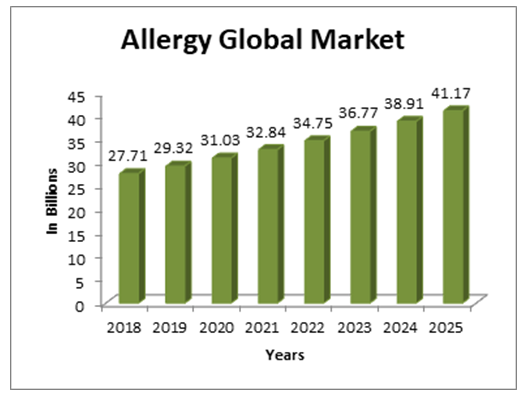
The Middle East and Africa show a reliable growth in the market due to the rising pervasiveness of nasal allergy in the Middle East and considerable demand for health care services in Africa. Rapidly growing the incidence of allergic diseases and rising environmental pollution will be important growth drivers for this market during the upcoming period. Moreover, the large proportion of children aged below 14 years, who are at a higher risk of developing allergic disorders, will be an important driver for allergy diagnostics market.
Food Allergy:

From 2018 to 2022, Food Allergy Market is expected to grow at a CAGR of 6.6% to reach 760.7 Million in 2022 from $540.68 Million in 2017. The growing pervasiveness of food allergy and growing adoption of Labelling-compliance are expected to be the considerable drivers for the market growth during the upcoming period. Furthermore, the increase in the pediatric population, the increasing prevalence of asthma, the rise in healthcare expenditure, stringent food safety regulations boost market growth.
Drug and Vaccine Allergy:
The global allergic drugs market is estimated to grow at a CAGR of 3.8%. The market is valued at $12.2 Billion in 2017 and is expected to reach $14.7 Billion in 2022. The market is expected to grow due to the different types of drugs and nasal sprays developed by manufacturers. A drug allergy is a drug hypersensitivity reaction and is mediated by IgE. The factors that cause a drug allergy include age, gender, immunity, illnesses, and heredity.
The vaccine allergy is one of the most extremely rare types of allergy, with only one to two serious allergic reactions per million vaccinations given. But when a person affected by vaccine allergy, it can be very serious, even life-threatening.
The global dermatology market is projected to grow at a CAGR of 7.7% to reach $32.8 billion in 2022 from the value of $23.2 billion in 2017. Dermatological disorders/ diseases are one of the most common disorders globally and the treatment is in high demand. The market is categorized into antibiotics, antifungals, antihistamines, laser therapy, medicated creams, ointments, steroids, targeted prescription medications, and vitamins. The diseases are categorized into genetic diseases, auto-immune disorders, allergy, cancers and tumors, infections and seasonal skin conditions.
Microbiological skin infections are another factors that influence the growth in the growth in the global dermatology infections treatment market. Microbes like bacteria, fungi, virus. protozoans and helminths are the major causes of skin infections. Fungal and bacterial skin infections are most commonly seen during summer and rainy months.
The global skincare market is expansive and is growing at an impressive rate. The market ranges from products like cosmetics, creams, steroidal creams, talcs to OTC and prescription drugs. The global dermatology market is forecasted to grow from the current value of $51 billion in 2017 to about $96 billion by 2025.
Venereal Diseases:
The global venereal diseases market/ sexually transmitted diseases diagnostic market is expected to reach $200.9 billion by 2022 growing at a CAGR of 8.61% from the current value of $128.07 in 2017. The rise in STDs has become a global public health challenge and includes more than 20 sexually transmitted infections. The STD treatment market is fuelled by the growing incidences of spreading of sexually transmitted infections. The commonly seen STDs are Chlamydia, Gonorrhea, Hepatitis (HBV), Herpes, Human Immunodeficiency Virus (HIV) and Syphilis. The high incidences of STDs are majorly due to unprotected sexual practices and are considered the second most common risk factor. Although many governments, NGOs, and hospitals have been taking up awareness camps for spreading the awareness of STDs and it is one of the factors that fuel the growth of STD treatments globally.
Why Helsinki?
Conference Highlights:
- Allergy and Autoimmune Disorders
- Dermatology & Aesthetic Dermatology
- Cosmetic Dermatology & Laser Therapy
- Drug Allergy and Vaccines Allergy
- Respiratory Allergy, COPD and Asthma
- Pediatric and Neonatal Allergy
- Food Allergy and Gastrointestinal Infections
- Allergy and Cardiovascular Diseases
- Seasonal Allergy and Immune Responses
- Microbial Allergy
- ENT & Ocular Allergy
- Insect Venom Allergy
- Zoonotic Diseases and Veterinary Allergy
- Pathophysiology of Allergy
- Venereal Diseases
- Skin Infections and Allergy
- Dermatitis and Psoriasis
- Skin Disorders and Pigmentations
- Clinical Immunology & Immunotherapies
Why attend?
Across the world the researches on Dermatology and Allergic Diseases and its advances are leading with a large number of respective doctors, researchers and scientists from various hospitals, universities, labs, and communities engaging in the field. It will be a great opportunity for you to reach the largest assemblage of committee members and participants from the respective field. Allergic Diseases 2019 will conduct the presentation, distribution information; allow networking with leading researchers and scientists, make a splash with new drug developments, and receive name recognition at this event. ICDAD provides two days of robust discussion with the world-renowned speakers, the most recent techniques, developments, and strategies related to diagnosis, prevention, and management of dermatology and allergic diseases as well as analyze new ideas and concepts on a global scale.
Who should attend?
- Allergist
- Immunologists
- Bacteriologists
- Virologists
- Physicians
- Dermatologists
- Microbiologists
- Pulmonologists
- Biochemists
- Biotechnologists
- Cellular biologists
- Pediatricians
- Molecular biologists
- Pathologists
- Epidemiologists
- Internists
- Urologists
- Venereologists
- Infectionist
- Gynecologists
- Pharmacists
- Health Care Researchers
- Nurse/nurse-practitioners
- Students
- Researchers
- Professors
- Academicians
- Business Entrepreneurs
Association & Societies Associated with Skin:
Middle East & South Africa:
- Egyptian Society of Allergy and Clinical Immunology
- Iranian Society for Immunology and Allergy
- International Society for Dermatologic Surgery
- International Society for Biophysics and Imaging of the Skin
- International Society of Dermatopathology
- International Society for Cutaneous Lymphomas (ISCL)
- International Society of Dermatology (ISD)
- National AIDS Control Organisation
- Iranian Society of Asthma and Allergy
- Irish Society for Immunology
- Israel Association of Allergy and Clinical Immunology
- Lebanese Society of Allergy and Immunology
- Nigerian Society for Immunology
- Saudi Allergy Asthma & Immunology Society
- Turkish National Society of Allergy and Clinical Immunology
- Algerian Society of Allergy and Clinical Immunology
- Federation of African Immunological Societies
- South Africa Allergy Society
- Nigerian Society for Immunology
Asia- Pacific:
- Bangladesh Society of Allergy and Immunology
- Asian Dermatological Association Ltd
- Australasian Society for Dermatology Research
- Australasian College of Dermatologists
- Australian Federation of AIDS Organisations
- British Society of Anti-Ageing Medicine
- Dermatological Society of Malaysia
- British Cosmetic Dermatology Group
- British Society for Paediatric Dermatology
- British Society for Dermatological Surgery
- Chinese Society of Allergy
- Federation of African Immunological Societies
- Hong Kong Allergy Association
- Hong Kong Asthma Society
- Indonesian Society of Allergy and Immunology
- Indian Academy of Allergy
- Japanese Society for Immunology
- Japanese Society of Allergy
- Korean Association of Immunologists
- Korean Academy of Asthma, Allergy and Clinical Immunology
- Malaysian Society of Allergy and Immunology
- Philippine Society of Allergy, Asthma, and Immunology
- Allergy, Asthma and Immunology Society of Thailand
- Philippine Society of Allergy, Asthma, and Immunology
- Asthma Association Bangladesh
- Australasian Society of Clinical Immunology and Allergy
Europe & UK
- European Dermato-Epidemiology Network (EDEN)
- International AIDS Society
- European AIDS Clinical Society
- European Society for Immunodeficiencies
- European Dermatology Forum Switzerland
- European Society for Cosmetic and Aesthetic Dermatology
- European Society for Dermatological Research
- European Society of Veterinary Dermatology
- European Women's Dermatologic Society
- Alabama Society of Allergy, Asthma, and Immunology
- Asthma Society of Ireland
- Austrian Society for Allergology and Immunology
- Bangladesh Society of Allergy and Immunology
- Belgian Society for Allergy and Clinical Immunology
- Bulgarian Society for Immunology
- Czech Society of Allergology and Clinical Immunology
- Croatian Society for Allergology and Clinical Immunology
- Dutch Society of Allergology
- Danish Asthma and Allergy Association
- European Federation of Immunological Societies
- European Academy of Allergy and Clinical Immunology
- European Respiratory Society
- Estonian Society for Immunology and Allergology
- French Society of Allergy and Clinical Immunology
- German Society for Allergology and Clinical Immunology
- Georgian Association of Allergology and Clinical Immunology
- Hellenic Society of Immunology
- Hungarian Society for Immunology
- Indonesian Society of Allergy and Immunology
- Italian Society of Allergology and Clinical Immunology
- Kosovo Allergy Asthma and Immunology Association
- Norwegian Asthma and Allergy Association
- Philippine Society of Allergy, Asthma and Immunology
- Romanian Society for Immunology
- Russian Association of Allergology and Clinical Immunology
- Spanish Society of Allergology and Clinical Immunology
- Swiss Society for Allergology and Immunology
- Swedish Association for Allergology
- Ukrainian Society of Allergy and Clinical Immunology
- Zimbabwe Society of Immunology
USA:
- American Association of Immunologists
- HIV Medicine Association
- Canadian Public Health Association
- American Sexually Transmitted Diseases Association
- American Academy of Allergy, Asthma, and Immunology
- Brazilian Association of Allergy and Immunology
- Canadian Society of Allergy and Clinical Immunology
- Canada Asthma Society
- Canadian Dermatology Foundation
- American College of Mohs Surgeons
- American Dermatological Association, Inc.
Related Conferences:
Middle East-
- 6th International Conference on Rare Diseases & Orphan Drug, February 18-19, 2019 Dubai, UAE
- 14th International Conference on Infectious Diseases, Prevention and Control, March 21-22, 2019 Dubai, UAE
-
International Conference on Vaccines and Immune Response, June 17-18, 2019 Dubai, UAE
-
14th International Conference on Allergy and Clinical Immunology, November 21-22, 2019 Bali, Indonesia
-
2nd International Conference on Tropical and Infectious Diseases, November 21-22, 2019 Bali, Indonesia
-
2nd International Dermatology Conference: Skin & Body, November 25-26, 2019 Helsinki, Finland
-
2nd World Cosmetic and Dermatology Congress, November 25-26, 2019 Helsinki, Finland
Asia- Pacific:
-
20th World Dermatology Congress, March 13-14, 2019, Singapore
-
2nd International Conference on Aesthetic Medicine and Dermatology, October 21-22, 2019 Sydney, Australia
- 2nd International Meeting on Aesthetic Medicine, June 12-13, 2019 Osaka, Japan
- 9th Edition of International Conference on Cosmetology & Skin Care, June 20-21, 2019 London, UK
Europe:
- 19th European Dermatology Congress, April 18-19, 2019 Amsterdam, Netherlands
- International Meeting on Dermatopathology, May 22-23, 2019, Paris, France
- 10th European Immunology Conference, June 13-14, 2019, Berlin, Germany
- 6th International Conference on Parasitology & Microbiology, July 29-30 2019 Amsterdam, Netherlands
- 13th International Conference on Allergy, Asthma & Clinical Immunology, August 29-30, 2019 Vienna, Austria
- 15th World Conference on Cosmetic Dermatology & Skin Diseases, September 25-26, 2019, Lisbon, Portugal
USA:
- 7th International Conference on HIV/AIDS, STDs and STIs, March 18-19, 2019 New York, USA
- International Conference on Skin Care & Aging, April 17-18, 2019, Quebec, Canada
- Immunology, Virology and Microbiology, July 24-25, 2019 Vancouver, Canada
- 11th World Congress and Expo on Clinical and Experimental Dermatology, August 02-03, 2019 Chicago, USA
Conference Highlights
- Allergy and Autoimmune Disorders
- Drug Allergy and Vaccine Allergy
- Respiratory Allergy, COPD and Asthma
- Pediatric and Neonatal Allergy
- Food Allergy and Gastrointestinal Infections
- Allergy and Cardiovascular Diseases
- Seasonal Allergy and Immune Responses
- Microbial Allergy
- ENT & Ocular Allergy
- Insect Venom Allergy
- Zoonotic Diseases and Veterinary Allergy
- Pathophysiology of Allergy
- Venereal Diseases
- Skin Infections and Allergy
- Dermatitis and Psoriasis
- Skin Disorders and Pigmentation
- Clinical Immunology & Immunotherapies
- Dermatology & Surgical Dermatology
- Cosmetic Dermatology & Laser Therapy
To share your views and research, please click here to register for the Conference.
To Collaborate Scientific Professionals around the World
| Conference Date | June 13-14, 2019 | ||
| Sponsors & Exhibitors |
|
||
| Speaker Opportunity Closed | |||
| Poster Opportunity Closed | Click Here to View | ||
Useful Links
Special Issues
All accepted abstracts will be published in respective Our International Journals.
- Journal of Clinical & Experimental Dermatology Research
- Journal of AIDS & Clinical Research
- Journal of Allergy & Therapy
Abstracts will be provided with Digital Object Identifier by









